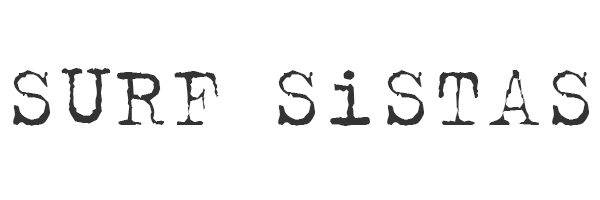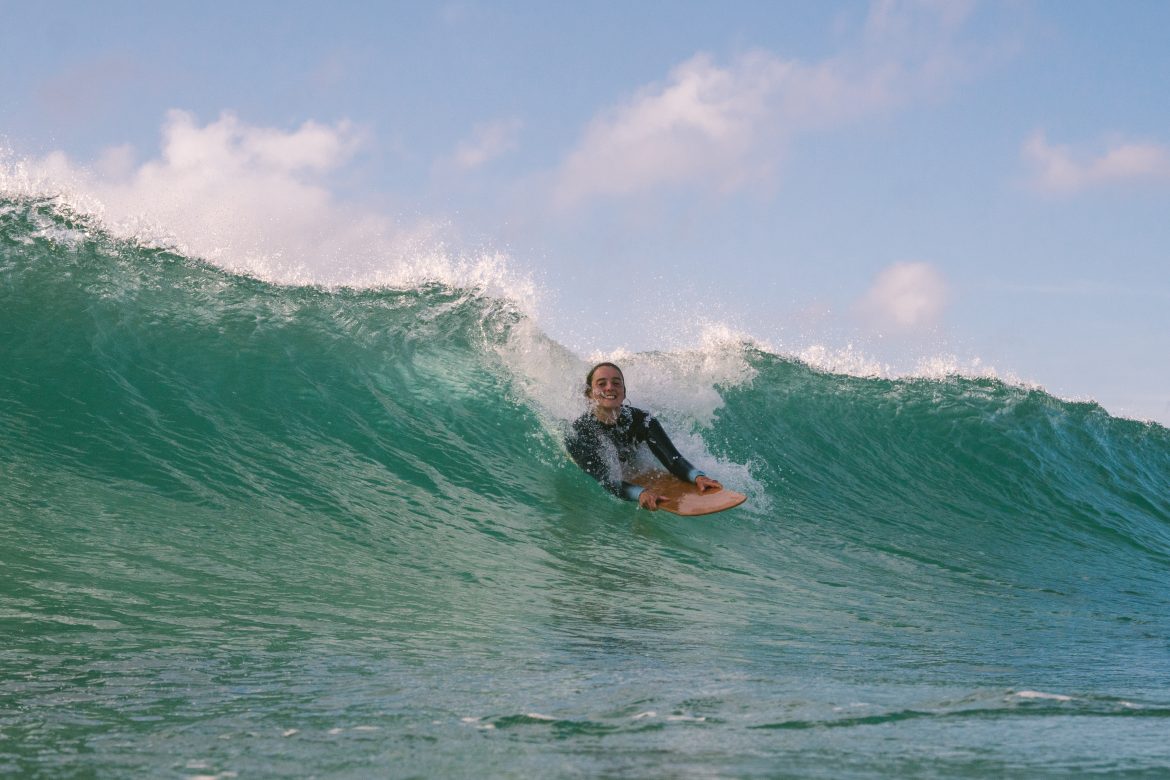Whilst surfing is our main stay at Surf Sistas, we love to swap it up in the water and try out other ways the enjoy our time in the sea! Our go to when the waves are funky is Bellyboarding and we’ve got 6 reasons why we think you’ll love it too!
I got into Bellyboarding for the first time last year, despite having spent 6 years already in the sea surfing. Here’s how it went.
It all started with a sprained shoulder…
I was having a good ol’ boogie at my friends’ wedding when out of nowhere, my friend Russell runs towards me and launches me in the air. It all turns on it’s head as Russell had had one too many drinks and lost his balance, He dropped me and I toppled head first to the floor.
It was confirmed at the physio two days later. A shoulder sprain and out of action for 6-8 weeks. That meant no surfing. When I looked at Magicseaweed (RIP Magciseaweed) following the appointment (why did I even do that) and saw the epic forecast for the week ahead, my frustration levels rocketed off the scale.
After a few weeks of sulking on the cliffs watching the waves, a solution to my woes presented itself. Hey Jeff, “A crew of us are heading for a belly board in the bay – you want to come?” My housemate Nash, ultimate surf legend, worked locally for a belly board company.
As bellyboarding required mostly leg action from kicking into waves, I knew my shoulder would be protected. The first set came in. “Jeff, this ones for you” shouted Candace, calling me into the wave. I mimicked what I’d see the rest of them do and held the board in front of me, kicking frantically with my little legs. As I felt the wave picking me up, I scooted my tummy onto the top and prepared for the drop.
Squeals and hoots radiated from my mouth. It honestly felt like one of the rides at Thorpe Park when you go over the top and take a vertical drop. I plummeted down the face of the wave, head first at rocket speed (at least it felt like it). In my peripherals, I could see the wave mounting over me, it felt invigorating and I honestly thought I’d get a tube, on the inside, I could see Nashi grinning at me. When I came off the back it was all grins and laughter… Belly boarding is the best!!
Whilst I’m still an avid surfer and nothing can replace that, I’ll score a few bellyboard sessions a month when the surf is funky or I’m in a funk with surfing. If you’re not tried it before but are intrigued, here’s a 6 reasons why Bellyboarding could be the one for you.
What is bellyboarding exactly?
Bellyboarding has a rich history, actually being the first form of surfing. Natives of the ancient Hawaiian and Polynesian Islands would ride in “prone” (lying down) position on short wooden boards called Paipo’s. This later evolved into what we know as surfing today when the Alaia board was invented; a longer version of the paipo. It has gone through phases of popularity in the UK since the 1900s. In the last few years we have seen the resurgence of bellyboarding – especially as a more sustainable alternative to mass manufactured polystyrene bodyboards that cause significant ocean plastic pollution. Bellyboarding involves riding waves on plywood wooden boards on your tummy. You can enjoy this in both whitewater and green waves.
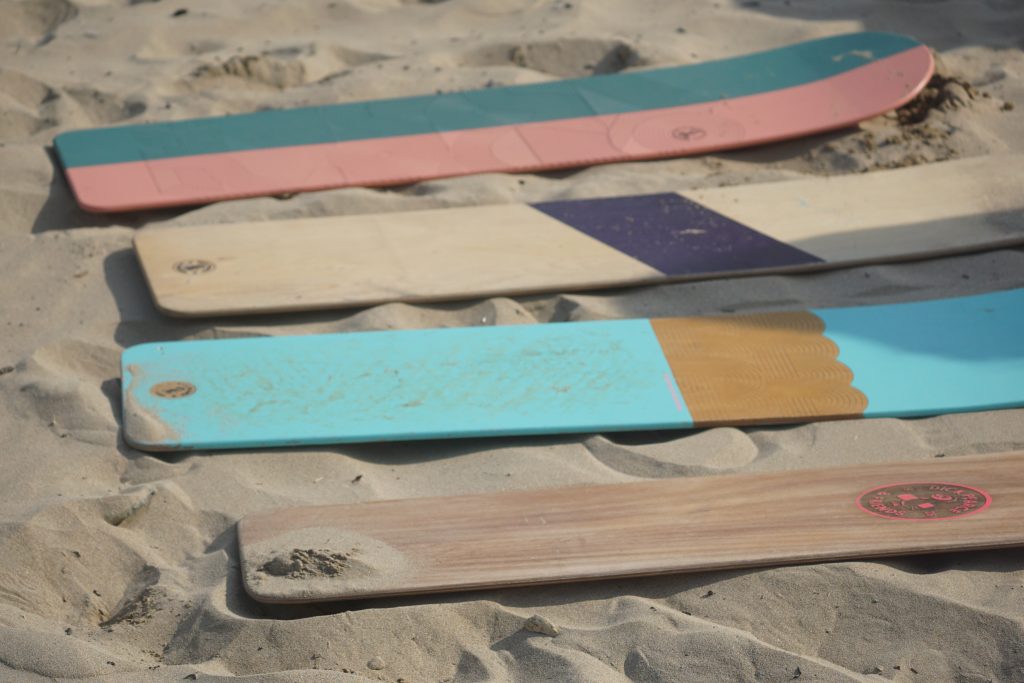
Why should you try it….
- For when the surf is funky…
When those onshore winds set in and the surf gets a bit lumpy and uninviting, it could be worth getting the belly board out. I’ve had countless fun sessions during an onshore low tide where the waves feel too wobbly for a surf.
- …..Or when you’re in a funk with surfing
Sometimes we get into a rut with our surfing. These times do pass. But instead of putting fuel on the fire by pushing yourself through frustrating times it could be worth taking a step back and enjoying the sea in a different way. Introducing: the humble belly board! It may look small but taking out the bellyboard to snag a few waves takes the pressure of trying to perform in the surf.
- When you can’t paddle anymore but want to get in the sea
Paddle paddle paddle. Unsurprisingly, about 50% of our time during a surf is spent paddling and about 3% wave riding! No wonder at the end of a good spell of waves, our shoulders are done for. When the muscle ache sets in but the surf is still on, consider a circuit brake and grab the bellyboard. It’s a great leg workout!
- Overcoming fears of steep take offs
One of the best things that came out of bellyboarding was overcoming my fear of steep drops. You see the wave behind you and start the paddle. As it picks you up, you look down the steep drop and you pull out in the fear of nosediving. The belly board simplifies things. You can forget about the pop and potential of nosediving and focus on acclimatizing to those take-offs. Taking on big waves on a belly board gave me leaps of confidence with my surfing take-off.
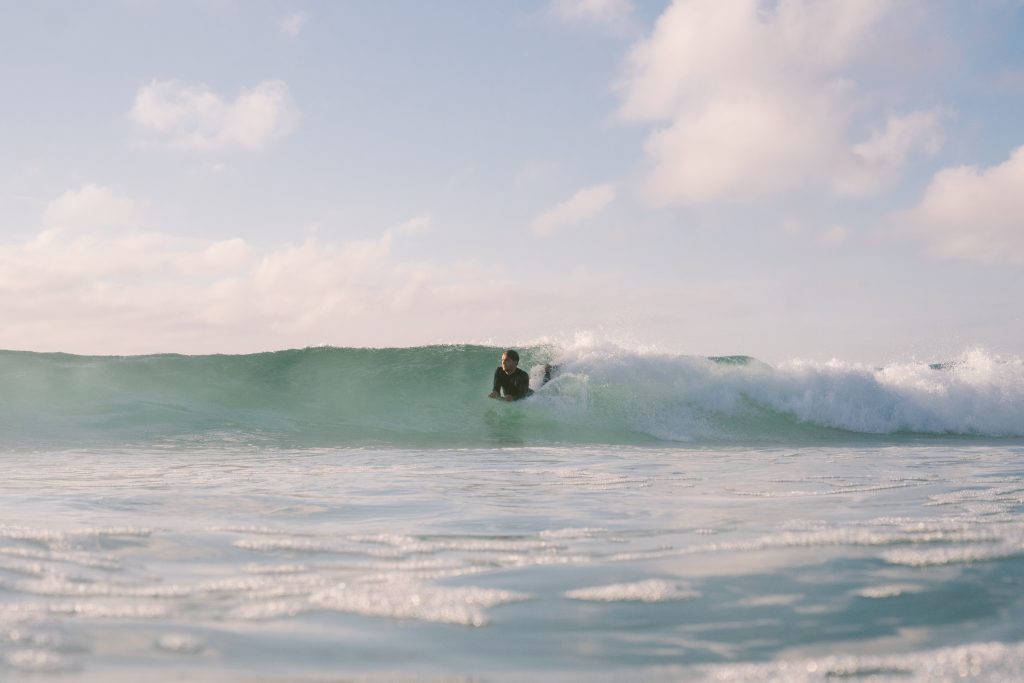
- It’s utterly hilarious
Bellyboarding consists of beaming grins and belly laughter.. Belly boarding removes some of the pressure we surfers put on ourselves to score good waves with style and technique. You can focus on having a good time in the water with friends. Just make sure you don’t get ridden over by a surfboard.
- A sustainable alternative to a bodyboard
Bellyboards have traditionally been made of plywood and still are to this day. It’s estimated that 16,000 polystyrene foam body boards are discarded on UK beaches each year. Swapping for a wooden belly board will prevent further plastic pollution. Our favourite belly boards brand are local legends Dick Pearce, Potbellyboards and the talented Guy Butcher of Butch Boards.
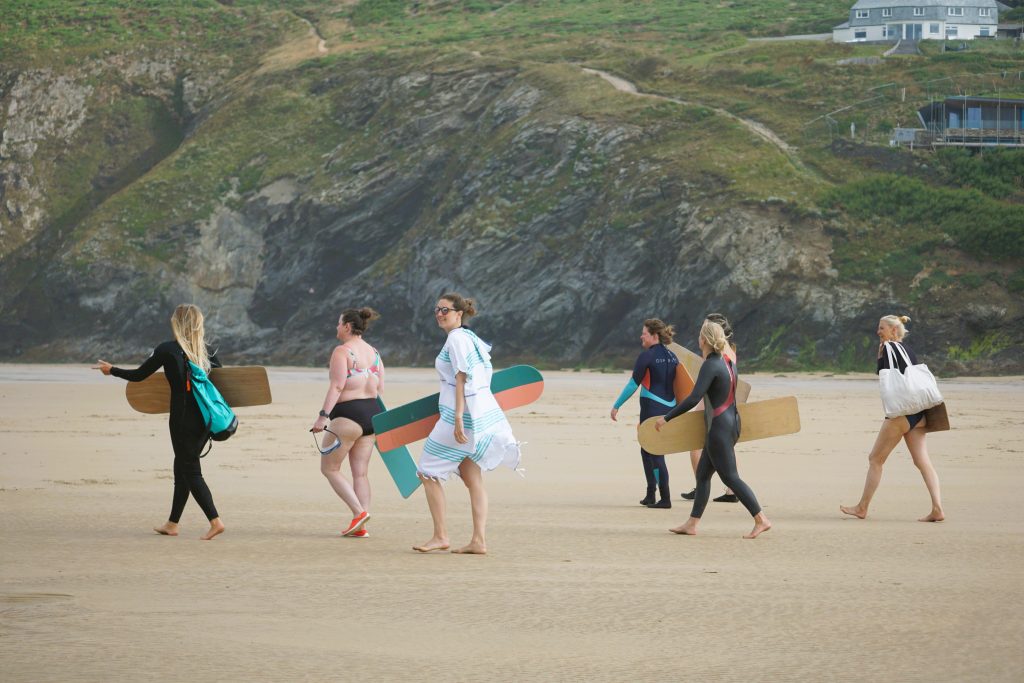
Tips for bellyboarding safely
Now you’re convinced that belly boarding is worth a go, here are some handy hints for doing it safely.
Stay within your comfort zone
If you’re unconfident in the sea then standing in waist to chest water, you will still score you epic belly boarding opportunities. If you want to ride the green waves, a pair of swim fins will give you the extra added propulsion to take off. I much prefer having my fins on for peace of mind.
Go between the flags at a lifeguarded beach
The red & yellow flags is the place for bellyboarding. You’ll be away from the surfers and less likely to be hit by a surfboard. The flags also map out the safest parts of the beach away from rocks and strong currents.
Know the beach hazards
We always recommend swimming between the red and yellows. But it’s still important to know the beach hazards, especially if you’re in the sea out of lifeguarded hours. Look out for rip currents (read the RNLI’s explanation here), rocks and strong offshore winds. The best thing is to check the surf report before you head to the beach and check the beach at low tide. This is when most of the hazards are exposed. If you’re unsure don’t go in.
Wear a pair of swim fins and a wetsuit
Swim fins with give you extra propulsion for maximum wave catching but also with help you to swim in and out of the sea more easily. I love Da Fin’s which fit really well and are made of Silicon (not plastic which is more likely to break and worse for the environment)
As a general rule a 4mm wetsuit is a good go-to for bellyboarding most of the year round. You can wear a 4mm suit from early April/May through to November. However if you’re surfing in the summer months into autumn (June-October) when the water is warmest, a 3mm suit will suit you well. For the hardy surfers heading into winter surfing, November-April is the time to pull out a thicker 5mm suit.
Watch out for surfers!
Communicate! Don’t be afraid to call when you’re taking a wave or making a noise if you think a surfer could be close to hitting you. You might also want to consider wearing a helmet for extra precaution. In whatever situation you find yourself in, make sure you protect your head as a priority.
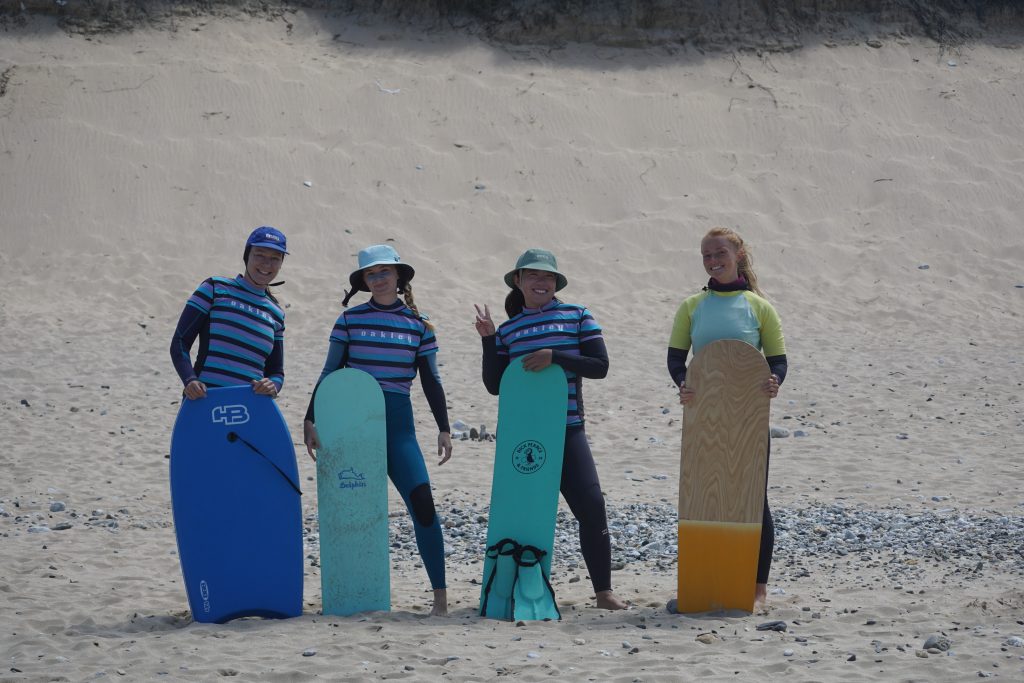
We’re big fans of bellyboards at Surf Sistas. During our courses, there’s the opportunity to get the bellyboards out for a session if you feel like you want a break from surfing! Join us on a Cornwall course in 2023 for a good old giggle in the waves.
